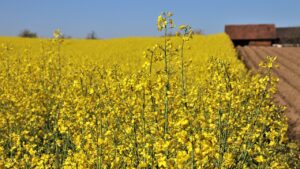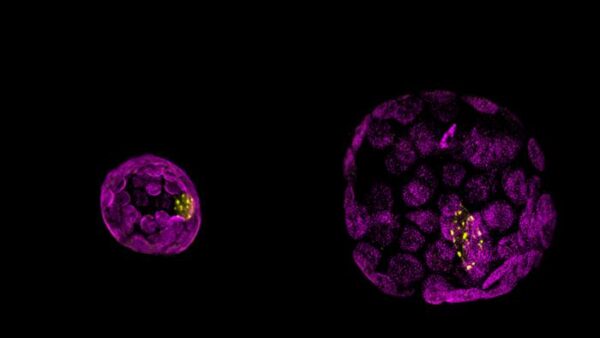
EDITOR’s NOTE: Retail Roundtable is an essential new print and digital tool to help people who sell seed get the knowledge they need to better serve their customers. Have an idea for a future Roundtable? Email us at mzienkiewicz@issuesink.com with the subject line Retail Roundtable!
BIOGRAPHIES:
Jim Bagshaw serves as sales director for Canterra Seeds, and is responsible for developing and managing the company’s sales team throughout Western Canada. He is an industry veteran with a wealth of sales and management experience. He received his bachelor of science in agriculture at the University of Saskatchewan.
Jim Downey serves as research and development manager for SeCan. He’s responsible for the evaluation and acquisition of new varieties for Western Canada and is involved in establishing research agreements. Jim acts as SeCan’s liaison with western Canadian plant breeding institutions. He farms near Saskatoon, Sask.
Sarah Foster is the president of 20/20 Seed Labs. She studied and qualified as an accredited seed analyst at the National Institute of Agricultural Botany in Cambridge, England. Her work experience includes seven years with Sharps Seed International (Advanta) in the United Kingdom, and five years with the United Grain Growers in Edmonton after immigrating to Canada in 1984.
Germination: As the 2017 harvest winds to a close, what’s on the minds of growers right now?

Jim Bagshaw: A hot topic has been straight cutting of canola. Everyone’s talking about it — they’re tweeting #SelltheSwather. It’s a great management tool if conditions are right. We’ve seen a lot of success stories, but unfortunately straight cutting is not for every grower, situation and geography. We saw pictures recently of canola that was not combined and was destined to be straight cut, and after eight inches of snow it was flat on the ground and was going to be a nightmare to pick up. Pod shatter technology means under the right conditions, it can be straight cut. Under the wrong conditions, they’ll still need to swath, but they do have the option of straight cutting if the opportunity presents itself.

Jim Downey: Farmers are looking at the crops they just grew, and they’re gazing into the rear view mirror. If they had issues, they often will be looking for a new variety to address those issues. Farmers are right now looking at production problems they had in 2017, but a big question is, will that get them to switch to a new variety? I often say that farmers think more about fertilizer and equipment than they do about variety selection, so if we can get them to focus on variety issues for more than 20 minutes, we’re doing pretty good.

Sarah Foster: Top-of-mind is yield — everyone wants the best yield they can get. Variety can have a lot to do with that, but it doesn’t just stop with that. Crop rotation is very important because it has a big bearing on what diseases are in the soil from previous crop years.
Germination: What are growers looking for in terms of traits?
JB: In 2018 we’ll see a shift back to Roundup Ready products. The InVigor system will still be the largest portion of market share, but we see more growers coming back to Roundup Ready. This is being driven by InVigor products having lost yield advantage — Roundup Ready options are yielding as good or better.
JD: When it comes to wheat, some big issues include Fusarium head blight (FHB) resistance, low protein, short straw, late maturity, sprouting resistance, threshability, and midge/ sawfly resistance. Many growers want higher protein because there’s big premiums this year. A few people might be looking to have taller straw, especially if they want to bale straw during a feed shortage, but short straw is still more desirable for most grain producers. Some people in the north who had a lot of rain, like northern Alberta and Saskatchewan, are thinking about earlier maturity, grade retention and sprouting resistance. Threshability often flies under the radar, but with rotary combines, many people aren’t as aggressive with threshing, and for those who’ve grown wheat varieties that give trouble, they’re looking for varieties with good threshability.
Germination: Any disease concerns?
JB: Clubroot is very much a topic of concern. Not a lot is known about it. It’s spreading quite rapidly. This is something growers need to manage, before it manages them. It’s been found in all Prairie provinces now. Where growers have clubroot infected fields, the Canola Council of Canada recommends growing only clubroot resistant canola and only once every four to five years before they grow canola again. Plus in many clubroot infected counties in Alberta, growers are now restricted where they must grow a clubroot resistant canola, which has limited them on product choice. We really tell growers to get in front of it, manage it and limit risk.
SF: In 2018 we may not see major infection problems because we’ve had a drier year overall, but in northern Alberta harvest went late because of late seeding, and if that seed sat out too long, you’ll see disease pressure — especially in canola — and sprouting in cereals.
Germination: There are many new varieties out there, especially ones with disease resistance. What should growers be advised to watch out for?
JB: While every company has clubroot resistant canola varieties, for example, they’re not all the same. There are different genes used, some with higher levels of resistance or resistance to different strains of clubroot. Picking a clubroot resistant canola for an area that doesn’t have clubroot but is close to clubroot-infected areas is your best chance of avoiding the problem.
JD: Some growers want to be early adopters and grow new stuff. My advice is often to wait a year. Seed is much more widely available and more reasonably priced the second year. And unexpected factors do crop up. An example is the wheat variety AAC Penhold. It’s widely grown in Alberta due to FHB resistance, but it’s not popular in Saskatchewan and Manitoba because grain markets/ handlers there don’t get critical mass, and don’t want to bring it into the elevators.
SF: When it comes to Fusarium graminearum we have been encouraging people to use a DNA test and not just a plate test. The plate test washes the seed before it’s put on the agar, so there’s a chance the spores on the surface will be washed off.As a result, plate tests can miss the Fusarium graminearum. If the DNA test is positive, but the plate is negative, we know we have a late infection and an appropriate seed treatment should be used.
Germination: Clubroot is talked about a lot when it comes to canola, but what’s the status of blackleg?
JB: Blackleg is still a bigger issue than clubroot across Western Canada.
24 GERMINATION.CA NOVEMBER 2017
People forget about how much yield kick they’re getting from blackleg. By the time you notice it in your field, you’ve likely lost 20 per cent yield potential already. People this year are surprised at how well their canola did, but that’s because we had less disease pressure. When we get back to more traditional moisture levels, you really need to be concerned about blackleg. Many companies give a blackleg rating that will tell you what blackleg resistant genes are in the product. Make sure you not only rotate your crops, but also rotate your types of resistance, so you don’t grow two hybrids with the same resistant gene.
Germination: Growers tend to focus on yield, but there’s more to it than that. How do you advise them in this area?
JB: It’s important to look at the crop type and examine the market — we’re hearing there were significant changes in market share of crop types in 2017. Going into 2018, we’re seeing a swing back to wheat acres and a decrease in canola acres. With canola, many areas were dry and canola acres did poorly if they had no irrigation access. We’ll see a pullback in canola — it’ll still be around 20 million acres, but down from the 22 million-plus we saw this year. Soybeans have been the Cinderella crop, but people realized this year that while there are areas soybeans are suited for, there are areas where they are very much a gamble.
JD: Seed guides are hugely valuable, but there are a few tricks to getting the most out of them. A lot of farmers will focus on yield data, but I direct them over to the other agronomic data based on the height, maturity, lodging, FHB and disease tolerance. It’s very important to look at those other factors and not just yield. Also, farmers often forget to look at the seed grower directories in these guides. These are useful; if you have a long list of seed growers growing a variety, that means there’s a big demand for that variety. There will be lots of seed available, you won’t have to drive as far to pick it up, and usually the price is more reasonable when there’s lots of seed around.
SF: The best yields start with the best seed. Having a vigour test can actually influence your whole decision as to whether you should be using that specific seed at all. You can have a very reasonable germination, but in the background there could be frost damage or other issues that affect the vigour. Had you tested for vigour first, you’d know there’s a major background issue. A low vigour doesn’t mean you can’t use it — it means you have to monitor and manage the seed for the best seeding rate.
Germination: What about tank mixing? There’s been a lot of talk about that.
JB: Research shows tank mixing another group of herbicides can significantly reduce any risk of herbicide tolerant weeds. Putting another group of herbicides in your application at least once a year will do more for managing herbicide resistant weeds than anything you can do in rotation. We see a lot of questions on that. It’s a good news story that if growers do this, it will keep the Liberty and Roundup traits viable options for a long time.
Germination: What about seed treatments? We hear a lot about them these days, but what are growers thinking?
JB: Seed treatments are well known on the disease side of things, but what about insects? We’re seeing pressure from cutworms and flea beetles. People are thinking, ‚ÄúI have this insect problem, and it’s expensive to manage with a post-emergent product, so I’m better off spending a little more money up front to ensure I’m minimizing this problem.’ Growers are really paying attention to how seed treatments can help protect against pests.
Germination: When it comes to testing, do a lot of growers still not do it?
SF: There’s a good percentage of farmers who don’t test. We have to continue to educate farmers to test and buy certified seed regularly. There’s probably a good 60 to 70 per cent of seed going into the ground that isn’t tested. Having your seed tested for a basic germination test at $30 isn’t a big deal at the end of the day.











